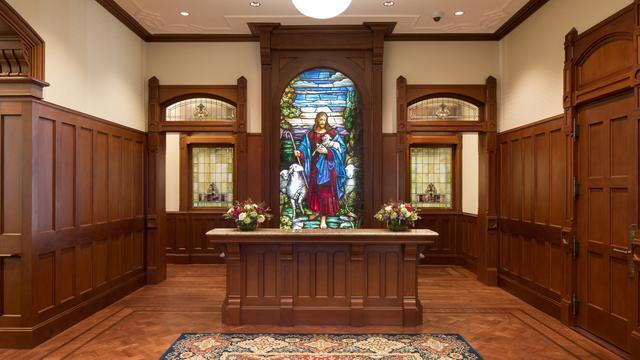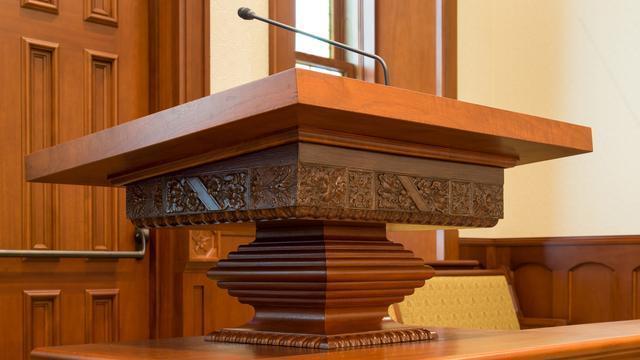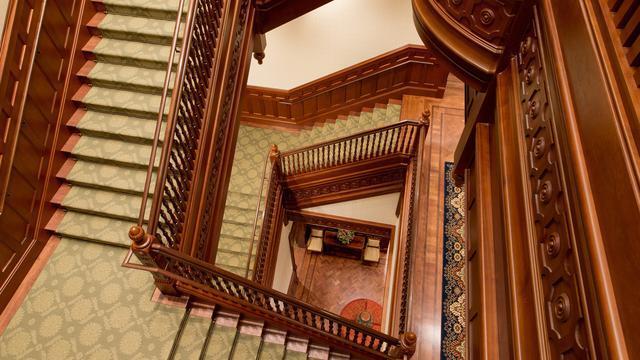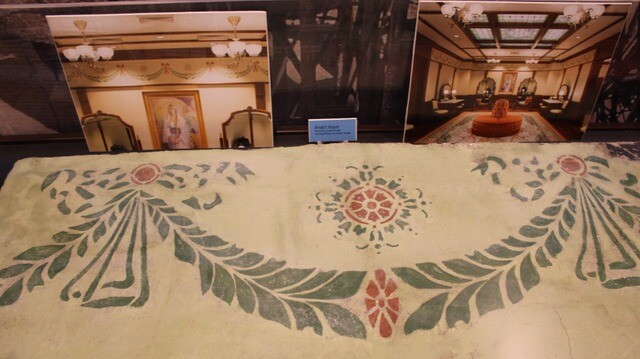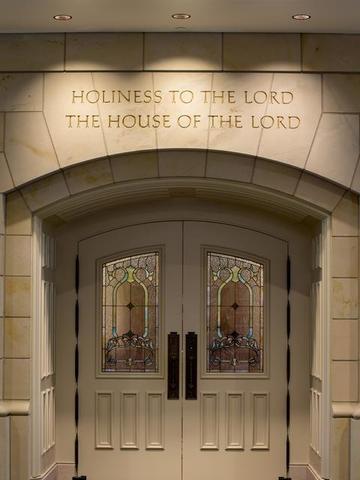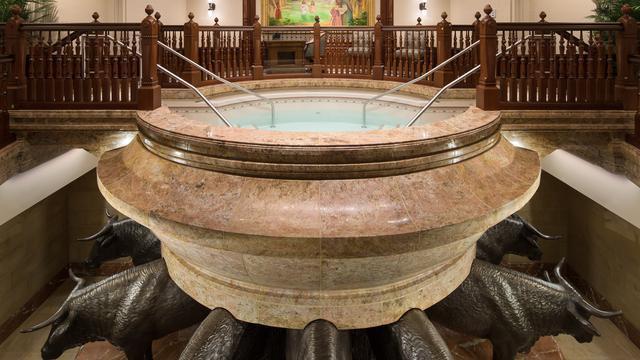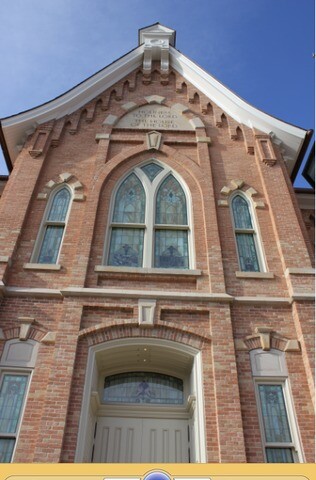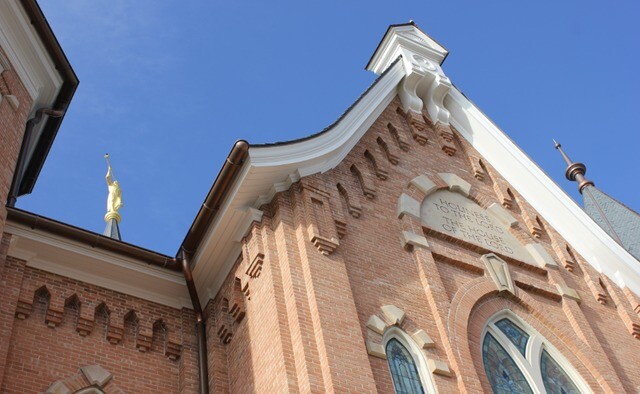Walking through the doors of the Provo City Center Temple, time seems to ripple in on itself, transporting you to a well-loved past even as it turns hearts to the future. The smell of rich mahogany and walnut envelopes you immediately after opening the doors, and remnants of the temple's history glimmer from unexpected corners.
"Many of you remember in 2010 when the temple was burned to the ground. It was literally nothing but ashes," Elder Larry Y. Wilson of the Second Quorum of the Seventy said while guiding a media tour of the temple. "But, when I look around me today, I am reminded of the phrase in Isaiah . . . 'To appoint unto them that mourn in Zion, to give unto them beauty for ashes'" (Isaiah 61:3).
One look around the temple, and it's clear that none of the fire's damage and heartache remain. It's all been replaced with an exquisite beauty that captures the love and sacrifice Saints have given for the temple and tabernacle over the past 150 years. It's remarkable to note that exactly five years after fire gutted and burned the Provo Tabernacle, leaving nothing but ashes inside its skeletal walls, construction on the temple officially ended, fulfilling the prophetic words of Elder Holland that "like a phoenix out of the ashes" a new temple would be built "on the ground and out of the loving memory of our beloved tabernacle."
Now, the Provo City Center stands ready for the public open house (January 15) and ready to be dedicated as the 150th temple of The Church of Jesus Christ of Latter-day Saints (March 20). For those who plan on touring this magnificent new temple or want to learn more about its history, here are a few unique stories and tidbits you won't want to miss:
More than half the temple is underground.
For many visitors, entering the temple itself might be a unique experience as they descend a series of steps to reach the south, underground entrance. While there is also a street-level entrance to the temple, this underground entrance makes it easy for patrons who use the extensive underground parking to access the temple.
Because the temple was designed with the intent to preserve as much of the historical integrity of the Provo Tabernacle as possible, most of the expansion of the temple occurred below ground. The Provo City Temple consists of four levels: two underground and two above ground. Each level is roughly 11 to 12,000 square feet, all except the upper underground level, which was expanded to 53,000 square feet to provide enough space for all of the essential ordinance rooms in the temple.
As Elder Wilson noted, as one travels through the rooms of the temple, "there's a sense of rising heavenward and being drawn towards God in the work that happens here."
The temple contains multiple inscriptions of "Holiness to the Lord, the House of the Lord."
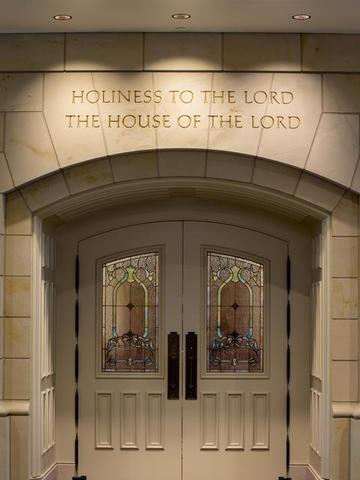
Image from Mormon Newsroom.
This unique underground entrance makes the Provo City Center Temple rare in another way as well. Instead of just one inscription of "Holiness to the Lord, the House of the Lord" over the main temple entrance, the Provo City Center Temple has three such inscriptions: one above the south, underground entrance; one above the south, street-level entrance; and one above the east door, which used to function as the main entrance to the tabernacle.
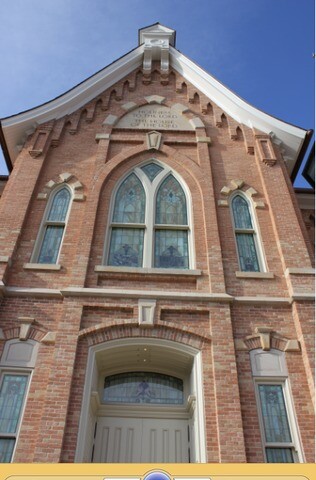
The temple echoes its rich heritage.
From elegant sculpted wallpaper, intricate spiral staircases, Victorian lamps and furnishings, elaborate wooden moldings and decorations, and towering Gothic arches, everything in the Provo City Center Temple hearkens back to and honors the lives of the pioneers who worshiped in this place for over a century. In fact, in 1886-1887, general conference was held at the Provo Tabernacle, showing its centrality and deep significance to members of the Church in Utah County and throughout the world.
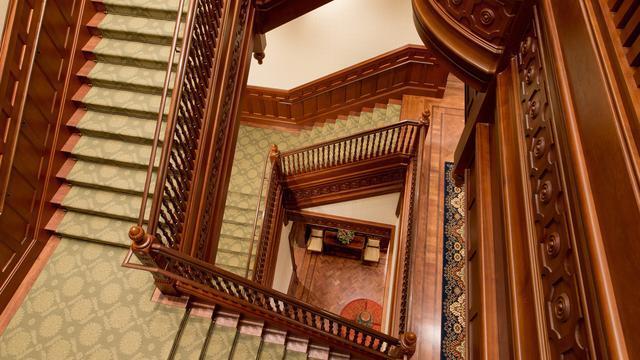
Image from Mormon Newsroom.
The temple's motifs and designs draw heavily from pioneer buildings—most specifically the Manti Temple, which was built around the same year the Provo Tabernacle was constructed. Here are just a few specific design elements you should be sure to pay attention to when touring or viewing photos from the temple:
The Floral Ribbon Design in the Bride's Room
Just beneath the dark, mahogany moldings in the bride's room is a painted green and pink ribbon ornamentation. The design for this pattern comes from the original tabernacle itself. After the destruction of the tabernacle, while fire crews were cleaning the debris, this design was discovered beneath a layer of plaster severely damaged by the fire. It appears this original design had been covered and forgotten quite some time ago. But, it was because of this outer layer of plaster that the design was preserved, allowing it to be rediscovered and used in the temple today.
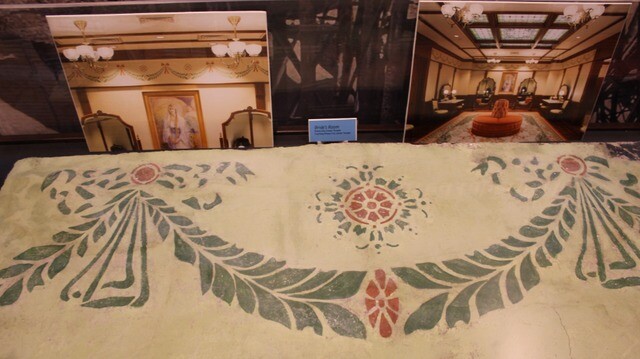
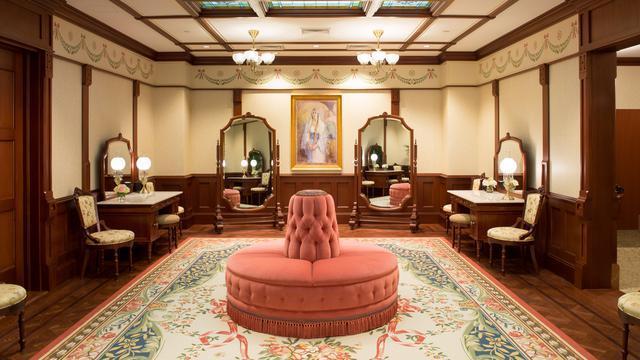
Image from Mormon Newsroom.
The Bench-Style Seating in the Instruction Room
While most temple instruction room's consist of a series of individual seats set up in rows, the Provo City Center Temple has connected benches that are partitioned off into individual seats in order to better imitate the original bench-seating found in the Provo Tabernacle.
The Pulpit in the Chapel
The only original piece of furniture preserved from the Provo Tabernacle is the pulpit which can be found in the temple's chapel. This exquisite piece of woodwork escaped the fire after having been removed from the Provo Tabernacle in preparation for a music concert set to be performed there.
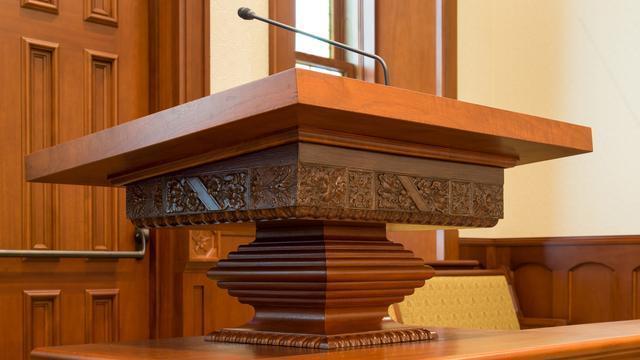
Image from Mormon Newsroom.
The Gothic Arches
A unique feature of the Provo City Center Temple not found in any other LDS temple is the gothic arch design that can be found on the highest floor of the temple in the sealing and instruction rooms—arches crafted after the original architecture of the tabernacle.
The Oxen Holding the Baptismal Font
Made of bronze, these oxen are crafted after the same design as those in the Brigham City Temple, and, like all temple baptismal fonts, have 12 oxen symbolizing the 12 tribes of Israel, three facing in each direction (North, South, East, and West).
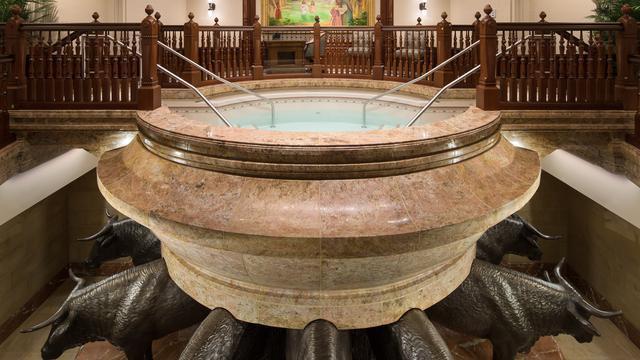
Image from Mormon Newsroom.
Be sure to also note the extensive wooden carvings and moldings, the authentic Victorian furnishings, and the beautiful rugs and wallpaper that all pull their inspiration from historic pioneer buildings and temples.
Nineteen unique pieces of art decorate the temple.
Much of the original artwork of the temple captures tranquil landscapes, many of which wouldn't appear out of place in a pioneer home. While all of these pieces are stunning, the stories of a few cause them to stand out from the rest:
Elspeth Young's "Mary Wanless"
In the hallway just outside the women's dressing rooms, a picture of a pioneer girl hangs. Carrying flowers, her rosy cheeks and bright eyes hide the sorrow of this real-life pioneer named Mary Wanless. After losing her step-mother just a short time before crossing the plains, Mary and her family became separated from their company along the Oregon Trail. During this time, Mary's father was seized with a stroke that took his life. Now the head of the family, this young girl took charge of her younger siblings, picking flowers and berries to provide enough food to help them survive the long journey to join the Saints.
Robert Marshall's Instruction Room Mural
In the north instruction room, Robert Marshall sacrificed much to capture the beauty of the Creation, the Garden of Eden, and the world in which we live in today. While both instruction rooms incorporate many elements of Utah's natural elegance and wildlife, Marshall finished this mural despite a grave illness, often using a wheelchair to help support him while he found the energy to paint. This mural represents one of Marshall's last masterpieces and is a living testimony of his devotion to the Lord.
Michael Albrechtsen's "First Vision from Afar"
On the underground level outside the baptistry is a landscape that portrays a stream of sunlight illuminating a grove of trees from afar. This breathtaking view of the celestial phenomenon of the First Vision provides a different perspective for Latter-day Saints than that of Joesph Smith's: it shows the First Vision as the world or others would see it from a distance.
The Stained Glass Depiction of Christ
Inside the main, street-level entrance of the temple hangs a vivid and luminous stained glass depiction of Christ cradling a lost lamb. This stained glass is 120 years old and originated from a Presbyterian church in New York. A member of the Church bought and donated this artwork for the temple. Despite its age, the stained glass was in excellent condition, save for two strips of glass that were missing in the top and the bottom. The Church commissioned a local artist to repair and replace the missing pieces.
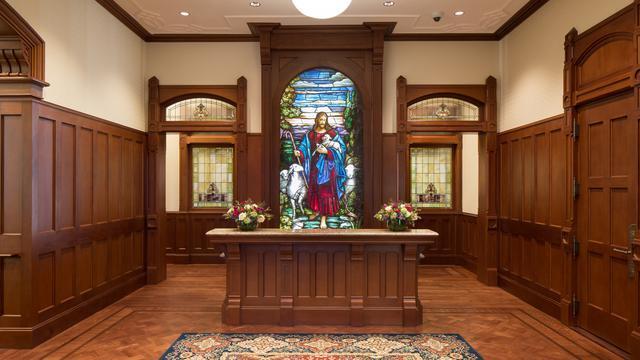
Image from Mormon Newsroom.
The temple is filled with Columbines.
Many temples integrate themes or motifs that add to their beauty as well as their unique culture. For instance, the Provo City Center Temple carries throughout its walls a theme and depictions of columbines—one of God's simple, yet beautiful creations that celebrate the unique flora of Utah County.
The Provo City Center Temple will be the 150th temple dedicated.
On October 1, 2000, President Gordon B. Hinckley dedicated the 100th temple in the world, fulfilling his goal to have 100 temples operating on the earth in the year 2000. Now, in just a few short months, Latter-day Saints across the world will be able to celebrate the dedication of the 150th temple of The Church of Jesus Christ of Latter-day Saints as the Provo City Center Temple is dedicated on March 20, 2016.
Elder Kent F. Richards, executive director of the Temple Department of The Church of Jesus Christ of Latter-day Saints, noted how this temple functions as a memorial to the past that allows us to look forward to the future. Every pioneer within the Church, whether a descendant of a past pioneer or a modern-day pioneer, can find peace and a connection to the Provo City Center Temple, because in it, "they will be creating a legacy for their children and their grandchildren that will endure throughout eternity."
And, as Sister Rosemary Wixom, General Primary President of the Church, noted, this temple and all temples "become the bridge between this life and the eternal life that lies beyond."
